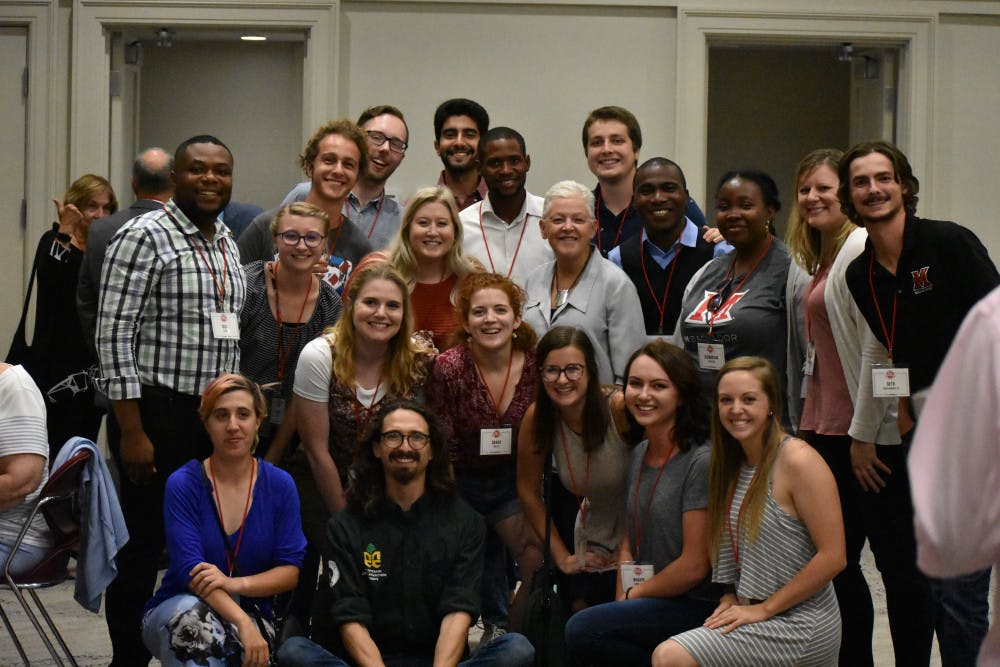By: Noah Miller
2019 marks the 50th anniversary of Miami University’s Institute for the Environment and Sustainability (IES). It predates the founding of the U.S. Environmental Protection Agency and is believed to be the oldest program of its kind in America. Originally called the Miami University Institute for Environmental Sciences, the body updated its title to the Institute for the Environment and Sustainability in 2010. This shift in terminology reflected a broader cultural shift towards a diverse, interdisciplinary approach to solving environmental problems. This is an idea articulated by the 1987 UN Brundtland Commission that defined sustainability as “meeting the needs of the present [generation], without compromising the ability of future generations to meet theirs.” It seems as though IES mirrors this philosophy.Today, IES carries on a rich history of innovative problem solving approaches championed by the late IES Director, Gene Willeke, and continued by current Director Jonathan Levy. Coupled with the never-say-no attitude of Assistant Director Suzi Zazycki, IES uses an integrated methodology to tackle real world environmental problems that face the local Oxford community. Each new IES masters student is assigned to a Public Service Project (PSP) while they study to complement the required IES graduate level core curriculum, an area of concentration that couples the student’s academic interest with professional skill building. Students must also complete a report in master's thesis-style. It is the PSPs, however, that are the hallmark of the IES program. By using practical knowledge built up from undergraduate studies, and with the help of professors and faculty who have spent their lives solving environmental problems, students are able to make a real, actionable difference in and around Oxford. As a public research institution, Miami is committed to regional outreach and support. The IES program facilitates not only local projects that improve Oxford, but the education of environmental masters students who require hands-on, innovative learning to succeed after graduation as well. In the fall of 2019, 16 new masters students from around the country and globe entered into the IES program. Each was promptly assigned a year-long PSP. Though it may sound daunting at first, the PSP process is long for a reason. The problems presented are real and pressing; therefore, the task requires detailed planning and implementation to levels well beyond that of a normal class group project. To illustrate this, here is an example of one ongoing Miami PSP. Oxford Mayor Kate Rousmaniere signed the Global Covenant of Mayors for Climate and Energy (GCoM) this year, a document placing Oxford amongst a coalition of over 9000 towns and cities around the world committed to reducing greenhouse gas emissions on the local level. This year, a team of six masters students will assist the Oxford Environmental Commission in completing a municipal greenhouse gas inventory for this initiative. By understanding how much greenhouse gas emissions the city of Oxford releases, the IES team will recommend possible ways in which Oxford can cut back on its emissions. These measures ensure that Oxford stays compliant with the GCoM. Without the help of IES, the Environmental Commission would be unable to conduct such an inventory, and Oxford would fall behind other cities who have committed to greenhouse gas reductions around the world. While tackling global carbon emission reductions has its place in environmental problem solving, so does local land use planning. The Butler County Soil and Water Conservation District (BCSW), our local federal entity that oversees stormwater management, agricultural conservation of soil and water, and assistance in local development and planning, is the client for another PSP. Under the newly created EPA Nine Element Plan grant program, the BCSW will employ a team of IES masters students to draft a non-point source pollution plan for addressing agriculture and runoff pollution in Hueston Woods Acton Lake and surrounding waterways. By helping BCSW with this plan, Hueston Woods will continue to receive the funding it needs to operate as a beautiful natural preserve for the Oxford community. Finally, one last IES team will look even closer to home, focusing on one of Miami University's own Natural Areas. Located east down Route 73, past the horse stables, the DeWitt Cabin and Natural Areas boasts a 10 acre multi-use field. Originally used for agriculture and then soccer fields, the field is now planted with native prairie vegetation. A team of masters students have been charged with creating an educational space for K-12 students to learn about Ohio’s native flora and fauna and the importance of prairie environments for pollination and biodiversity in the state. The team will create lesson plans for learners of all ages, design educational material to display around the park and create a space conducive for hands-on learning and exploration. Through this project, future generations of Oxford residents will understand the importance of the natural areas around them from a young age. This is a significant step in tackling larger, more complex environmental issues in the future. “The mission of the Institute for the Environment & Sustainability is to educate students as professionals and global citizens through interdisciplinary programs in environmental science and sustainability, and to provide leadership in areas of research and outreach that address environmental problems and promote a more sustainable society.” This is the mission statement of IES. Every year, the program continues to exemplify this directive. Through PSPs, interaction with world class faculty and the ability to personalize the master's degree program, IES students will be well equipped to handle the incredibly complex environmental problems of today.
This year's IES graduate cohort during the IES 50th Anniversary weekend with keynote speaker, Gina McCarthy.
Photo courtesy of Noah Miller

